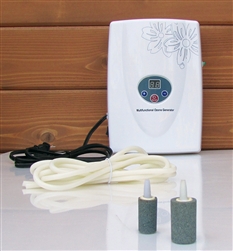What are you talking about? I mean we’re really working on teeth and this is really the way that we’re taught in dental school. We basically get a patient in. We focus on the teeth. The rest of the patient becomes a blur.
So we become technicians, engineers of [0:07:43] [Indiscernible] but I mean if we are going to be called doctors, we need to be healers. We can’t just be technicians. So as a result, we developed in this country and before some of the most toxic materials that we know of to actually place in people’s mouths.
I have been fighting for amalgam to be banned for years but unbeknownst to us, pediatric dentists, general dentists are still using formocresol on children routinely when they need a “children’s root canal,” which is really called a pulpotomy.
Formocresol is basically formaldehyde and you take some formaldehyde. You actually dab it and place it inside the child’s tooth and let it sit there. We know formaldehyde is a known carcinogenic. Why are we doing this? Because that’s the way we were taught.
Root canal is the same thing. We have a number of problems with the root canals. One of them is the toxicity of the materials. The second is the shrinkage of the materials. So when we are sealing a root canal, if the material shrinks, it’s going to create a lot of space for bacterial invasion.
So let’s go back to mercury. Amalgams were actually developed around 1830 in France. In about 1833, we were blessed with the French bringing the amalgams into American dentistry.
They were very, very well-received because we really didn’t have a material then that we could put in people’s teeth and people’s mouths and was resistant and was solid and we could really rely on it from a physical point of view.
So, amalgam was embraced in all the dentists. I mean a few years later, about [0:10:00] 50 percent of all dentists were placing amalgams in people’s mouths and mind you, amalgam is 50 percent, approximately 50 percent mercury and mercury as most of you know is probably one of the most toxic elements known to human.
I want you to take a minute. Can you guys all read this? Is that clear enough or not quite? OK. So the top part is really a manufacturer’s disclosure. This is what the manufacturers have to actually disclose to you for the product that they are selling to dentists.
Now the bottom chart is actually the US Department of Health and Human Services ranking the most toxic elements that we are aware of and mercury is number three of all the elements, of all the toxic elements that have been tested. Number three.
Why in the world are we still using mercury in people’s mouths? Well one answer could be because we go with what we know, right? Now, when I questioned this in dental school, I was taught hey, there’s really nothing to it. You guys are worrying too much about this and you’re really truly just a health nut and I started hearing that from my kids too a lot.
So I said all right. Well, listen, I mean perhaps I’m being a little extreme here but this is what I get to see everyday in my practice. This is years and years of dentists using amalgam in people’s mouths.
Not only are we getting the mercury leakage into the body but we’re also in addition to that getting teeth cracked. The amalgams actually expand with time. They leak and then actually start cracking the teeth. So, even a lot of dentists, fellow dentists don’t believe in the harm of mercury.
Sometimes I’m convinced by the fact that we actually – I do probably 10 or 12 crowns a week for people that have actually broken teeth from the amalgams. So there’s another toxic restoration, the basically oxidized. Their margins are open and I don’t know if you could see clearly on that picture but you see the crack lines as well on this mercury fill.
When we remove them, this is a kind picture. I end up finding a lot worse than that right underneath the amalgams and on that slide on the right side, you can actually see the crack lines on the amalgams once you remove them.
This is once the amalgams have been replaced. Now wherever you come from or whatever you do, you really have to look for somebody that is not just a holistic dentist but they really understand the physiology and the biology and is treating you as a human being.
There are a lot of dentists now that have jumped on the bandwagon and they call themselves holistic dentists but you have to make sure that this dentist truly is taking the pulse of your whole physiological, anatomical health picture.
And a lot of people who used to call me a quack now are following. OK. Any questions about this?
Participant: Is composite an amalgam also? Composite, dental composite.
Daniel Vinograd: Right. What is the question?
Participant: Is that also an amalgam? Does that have mercury in it?
Daniel Vinograd: No. Composites do not have mercury on them. They do have their challenges. Composites, most of the composites in the market have BPAs so you also have to be somewhat concerned about BPAs. It’s not a great material. It’s quite superior to mercury amalgam as far as the load on your body but they also have some problems, composites.
Gerson Institute Day 3 Lecture: Dr. Vinograd, Holistic Dental Health,

 Currently, I know that a number of you have been looking for ozonizers in order to follow my protocol (for prevention of gum disease). They can be found here:
Currently, I know that a number of you have been looking for ozonizers in order to follow my protocol (for prevention of gum disease). They can be found here: 
